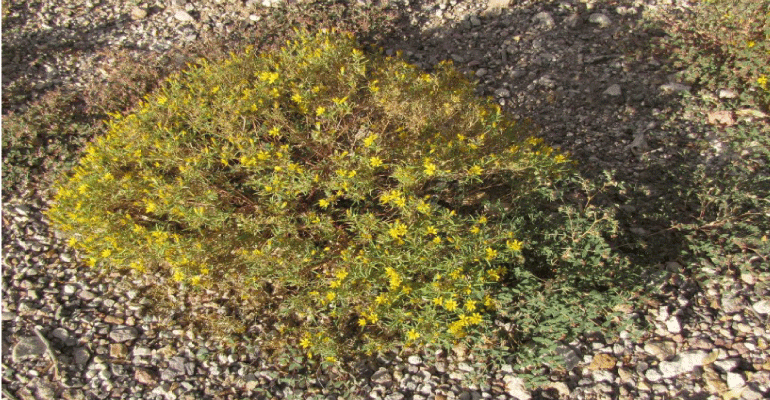
Golden fleece (Thymophylla pentachaeta, formerly Dyssodia pentachaeta) is known by many names including: Dahlberg daisy, dogweed, golden dyssodia, fiveneedle pricklyleaf, and golden dogbane. The plant is a member of the Asteraceae or Compositae (sunflower) family. Four varieties are recognized in Arizona.
Generally, individual plants can produce a dome of yellow, daisy-like flowers (about one-half inch in diameter) and grayish-green, lacy leaves which produce a fetid odor when crushed. The flowers are on individual stems above the doming foliage. The dome can be up to about 7 inches tall and 10 inches wide. Some sources say these plants are perennial and can spread profusely from seeds. Other sources say individual plants are short-lived, but are quickly replaced by new seedlings. When the flowers are done, you may see tiny seeds floating away on their parachutes, but most seeds are dropped to the ground.
For a more technical description and photos, see Southwest Desert Flora. Google Images here.
I have many of these plants in my front yard. I did not plant any of them – they just happened. Those that bloom among a flower bed get watered, but others in the yard survive without watering. Some do appear to be perennial.
Golden fleece is native to the southwestern U.S. and Mexico between elevations of 2,500 to 4,500 feet.
Golden fleece blooms from March through October, and in mild temperature areas, the flowers may last through the winter. This plant will tolerate full desert sun.
The flowers attract bees and butterflies, and some butterfly caterpillars eat the leaves. Golden fleece can be good garden ground cover that needs to be watered infrequently. Rabbits tend to leave it alone.
Note to readers:
Index with links to all my ADI articles: http://wp.me/P3SUNp-1pi
My comprehensive, 28-page essay on climate change here: http://wp.me/P3SUNp-1bq


